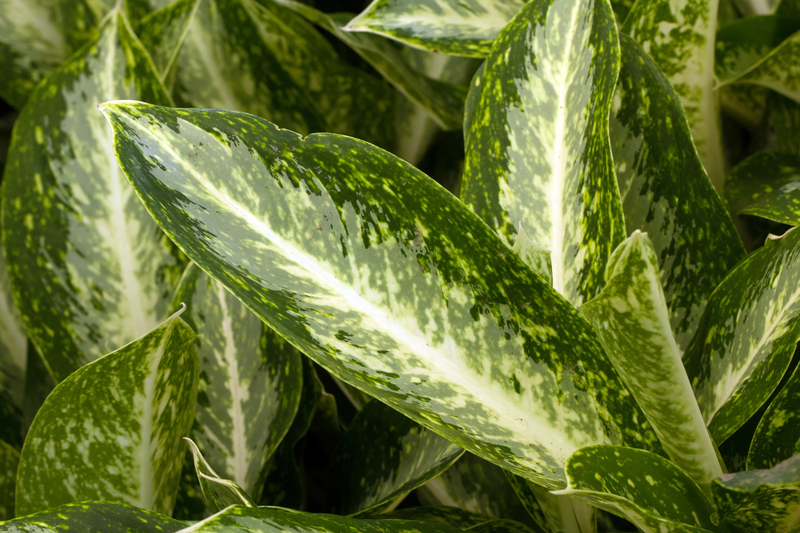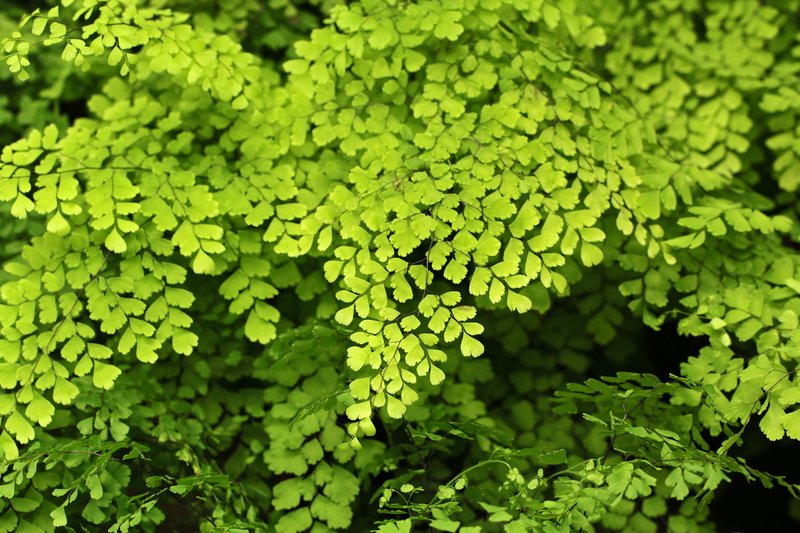Effortless Steps to Start Your Own Herb Haven
Posted on 15/08/2025
Effortless Steps to Start Your Own Herb Haven
Have you ever dreamed of having a lush, aromatic garden filled with vibrant greens and flavor-packed herbs? Starting your own herb haven is easier than you think! Whether you have a sprawling backyard or just a sunny windowsill, creating a personal herb garden brings delightful scents, fresh ingredients, and even therapeutic benefits to your home. Read on for a comprehensive, step-by-step guide on how to effortlessly start your own herb haven.
Why Create Your Own Herb Paradise?
There is something magical about growing your own herb garden. Not only does it provide fresh flavor for cooking, but herbs also add beauty, fragrance, and even health benefits to your living space. From basil to rosemary, cultivating herbs is a relaxing, rewarding hobby suitable for beginners and seasoned gardeners alike.
- Fresh, organic ingredients: Gain easy access to pesticide-free herbs.
- Cost-effective: Grow once, harvest repeatedly and save money.
- Therapeutic: Gardening is proven to reduce stress and enhance mental well-being.
- Sustainability: Minimize packaging and transportation impact on the environment.

Step 1: Choose the Best Spot for Your Herb Garden
Before you dive into planting, think about where you want your herb sanctuary to thrive. Sunlight, accessibility, and convenience are key factors to consider. Luckily, herbs are adaptable and can thrive in a range of settings.
Outdoor vs Indoor Herb Havens
- Outdoor: Ideal if you have a backyard or balcony. Most herbs like at least 6 hours of sunlight each day.
- Indoor: Great for apartment dwellers! Place pots near a south-facing window. Grow lights are an option for less sunny spaces.
Quick Tip: Make sure your chosen spot has easy access to water and is protected from strong winds or pets.
Step 2: Select Your Must-Have Herbs
Curate your own collection by selecting herbs you love to cook with or those that suit your lifestyle. For beginners looking for a true effortless herb garden, opt for resilient and easy-to-grow varieties.
Best Herbs for Beginners
- Basil: Essential for Italian dishes and pestos.
- Mint: Perfect for teas, sauces, and desserts. Be mindful--mint spreads rapidly!
- Parsley: Great for garnishing and flavoring a wide variety of meals.
- Chives: Add a mild onion flavor to salads and soups.
- Rosemary: Aromatic and exceptionally hardy.
- Thyme: Versatile for seasoning and garnishing.
Don't hesitate to experiment with other unique varieties such as dill, cilantro, or oregano. Personalize your herb retreat to match your tastes and needs!
Step 3: Gather Essential Tools and Supplies
An herb haven doesn't require expansive equipment. Just a few basics can set you up for success:
- Pots or planters: Ensure good drainage. Clay pots are ideal, but plastic or metal also work.
- Quality soil: Use well-draining potting mix formulated for herbs or vegetables.
- Watering can or spray bottle: For gentle, consistent watering.
- Labels and markers: Keep track of what you've planted.
- Small trowel or hand shovel: For easy planting.
Bonus Tips
Consider upcycling containers like teacups, cans, or mason jars for a creative touch to your homegrown herb oasis!
Step 4: Planting Your Herbs the Effortless Way
When starting your own herb garden, you can choose between planting seeds or buying young plants (starts) from a local nursery. For a hassle-free experience, beginners may find it easier to start with young plants.
Planting from Seeds
- Fill pots with moist, high-quality potting mix.
- Sow seeds according to the depth recommendations on their packet.
- Gently mist the surface, keeping it consistently damp but not soaked.
- Keep pots in a warm area; most seeds germinate in 7-14 days.
Transplanting Young Herbs
- Water the plants a few hours before transplanting to reduce stress.
- Gently loosen the root ball and plant at the same depth as in the original pot.
- Fill in gaps with more potting soil and press gently to remove air pockets.
- Water thoroughly.
Step 5: Create a Care Routine for Your Herb Oasis
Once planted, your personal herb retreat needs just a bit of regular care. Here's how to keep your plants thriving long-term:
- Sunlight: Place herbs in spots where they receive 6-8 hours of sun per day.
- Watering: Most herbs prefer moist but not waterlogged soil. Stick your finger into the soil--if the top inch feels dry, it's time to water.
- Pruning: Pinch off leaves regularly and remove flowers to encourage bushier growth and prevent bolting.
- Fertilizing: Use an organic, balanced fertilizer every 4-6 weeks (less is often more).
- Pest Management: Inspect leaves often. Use natural remedies like neem oil or insecticidal soap if pests appear.
Step 6: Harvest and Enjoy Your Homegrown Herbs
One of the perks of having your own herb haven is the joy of harvesting fresh, aromatic ingredients straight from your garden. The more you harvest (within reason), the better your herbs will grow!
Proper Harvesting Techniques
- Pinch, don't snip: Use your fingers or scissors to pinch stems just above a set of leaves.
- Never cut more than one-third: Avoid taking more than a third of the plant at once to encourage healthy regrowth.
- Harvest in the morning: Essential oils are most concentrated then, maximizing flavor and aroma.
Best Ways to Store and Use Herbs
- Fresh: Add directly to meals for burst of flavor and nutrition.
- Refrigerate: Wrap trimmed sprigs in damp paper towel and store in a plastic bag for up to a week.
- Dry: Hang bunches upside down in a cool, dark place. Once dry, crumble and store in airtight containers.
- Freeze: Chop and freeze in ice cube trays with a bit of water or oil for year-round use.
Step 7: Expand and Personalize Your Herb Garden Sanctuary
Once you have the basics down, it's easy to transform your effortless herb retreat into a unique garden sanctuary:
- Grow exotic or medicinal herbs: Branch out with lavender, lemongrass, or echinacea for teas and remedies.
- Add companions: Combine with edible flowers and salad greens for a complete kitchen garden experience.
- Decorate: Incorporate decorative stones, garden art, or fairy lights for extra charm.
- Build a vertical garden: Use wall-mounted planters or repurpose shelves for indoor spaces.
- Share the bounty: Cuttings or dried bundles make wonderful gifts for friends and neighbors.
Effortless Herb Haven: Top Tips for Lasting Success
- Rotate your pots: Turn containers regularly so all sides get equal sunlight.
- Stay curious: Learn about each herb's unique needs and adjust care accordingly.
- Keep it manageable: Start small and scale up as confidence grows.
- Celebrate the process: Gardening is as much about joy and mindfulness as it is about the harvest!

Frequently Asked Questions: Your Herb Haven, Simplified
Which herbs grow best together?
Generally, Mediterranean herbs like rosemary, thyme, and oregano thrive together thanks to their similar watering needs. Basil and parsley are also good companions. Avoid planting mint with other herbs--it tends to take over!
Can I grow herbs indoors all year round?
Absolutely! Indoor herb gardens are perfect for year-round cultivation with good sunlight, or supplemental grow lights in winter months.
How do I prevent herbs from flowering (bolting) too soon?
Regularly pinch off developing flower buds and keep your herbs in ideal temperature conditions. Rapid changes in temperature or inadequate pruning often cause early bolting.
Do herbs attract pests?
Some herbs, like basil and mint, naturally repel common pests. However, watch for aphids or spider mites, especially indoors. Good airflow and cleanliness deter most problems.
Conclusion: Your Effortless Journey to a Lush Herb Haven
Your dream of a thriving herb haven is within easy reach! Follow these simple, step-by-step strategies to create a flourishing oasis of flavor, fragrance, and beauty. Whether you grow a handful of pots on your window or cultivate a garden bed in your backyard, the rewards are many: fresh herbs, delighted taste buds, and a more sustainable lifestyle. Start your herb sanctuary today and watch your green oasis bloom--one effortless step at a time.
Ready to grow your own fresh paradise? Happy gardening!

